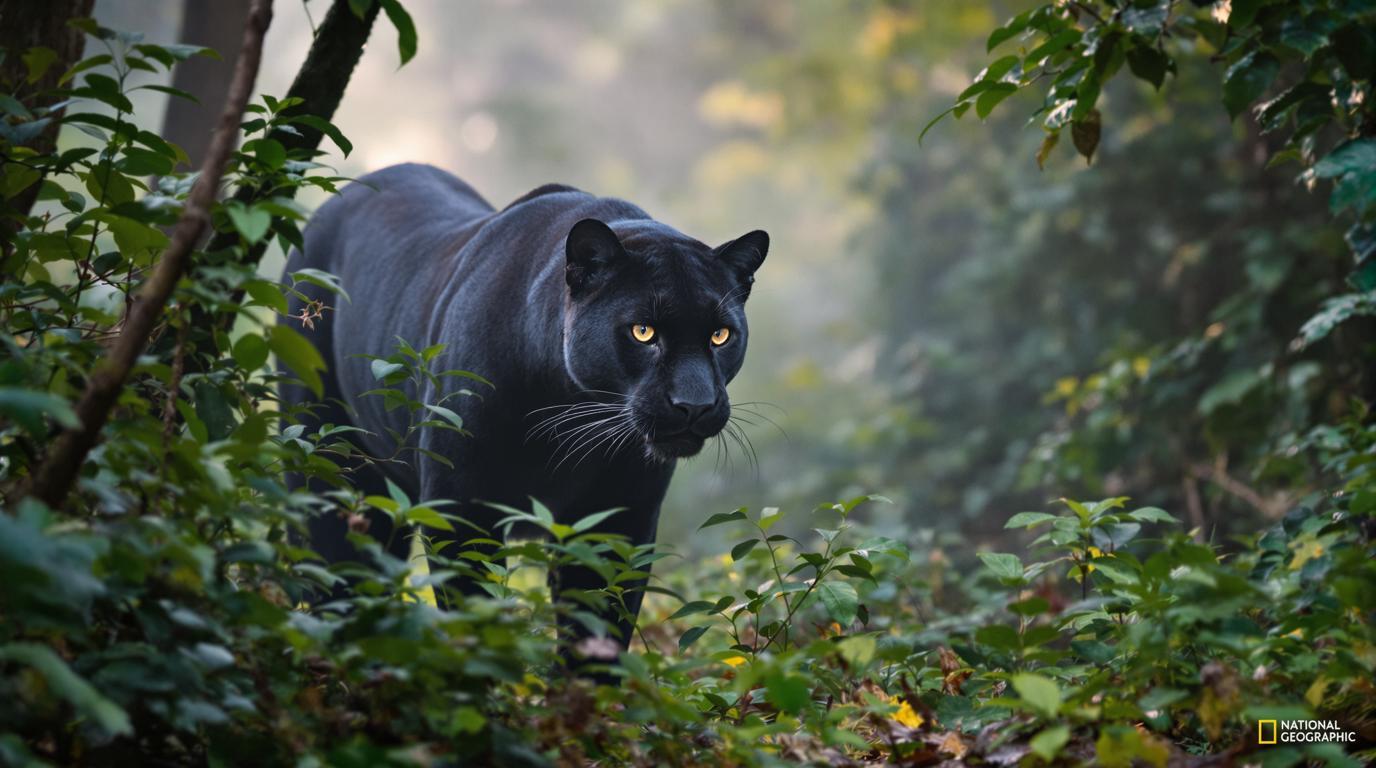The roar of a tiger echoes through misty forests as dawn breaks over Eastern India’s wild frontiers. While thousands flock to India’s famous tiger reserves each year, the country hides secret sanctuaries where the most elusive big cats – tigers, leopards, and the rare black panther – roam free from tourist crowds. These hidden wildlife corridors offer authentic encounters that even seasoned safari enthusiasts rarely experience.
Where the black ghost prowls Karnataka’s forests
In the lush jungles of Kabini, part of Nagarhole National Park, lurks India’s most photographed feline phantom – Saya, the melanistic leopard. With fur black as midnight, these panthers appear like shadows moving between branches. Many spend years seeking glimpses of these creatures without success.
“When you finally spot a black panther in its natural habitat, time freezes,” says wildlife photographer Shaaz Jung. “Their golden eyes pierce through dense foliage like nothing else in nature.”
Unlike India’s crowded tiger sanctuaries, Kabini offers intimate wildlife encounters without competing with dozens of jeeps for prime viewing positions.
Jawai’s leopards living among ancient granite boulders
Perhaps India’s most surreal big cat destination lies in Rajasthan’s rural interior. At Jawai, leopards have established territories atop massive granite formations that rise like islands from scrubland. What makes this location extraordinary isn’t just the cats – it’s their peaceful coexistence with local Rabari herdsmen.
Here, leopards and humans have maintained a centuries-old understanding. Leopards rarely attack livestock, and villagers consider these predators sacred guardians of the landscape.
Tracking striped shadows in Tadoba’s bamboo thickets
Maharashtra’s Tadoba Andhari Tiger Reserve represents the wild India that exists beyond tourism brochures. The park’s open meadows and dense bamboo forests create perfect conditions for tiger tracking. With over 80 tigers in residence, Tadoba offers among the highest chance of sightings in the subcontinent.
Unlike Ranthambore’s celebrity tigers, Tadoba’s cats remain truly wild, making each encounter genuinely thrilling. Early morning fog rolling across open grasslands creates the perfect backdrop for photography.
Periyar’s boat safari – tigers from the water
Kerala’s Western Ghats hide a unique big cat experience: tracking tigers via boat safari. Periyar Tiger Reserve centers around an artificial lake where animals gather during dry months. From silent boats, visitors occasionally spot tigers swimming between forested islands or drinking at dawn.
“When tigers emerge from misty shores at first light, it’s like witnessing a painting come alive,” explains naturalist Sudha Ramen. “The reflection on still water creates a double image – truly magical.”
Expert photography tips for capturing the elusive
Photographing big cats in Indian forests requires patience and preparation. Pack a telephoto lens (minimum 300mm) and a sturdy tripod. The golden hours – first light and late afternoon – provide dramatic lighting that accentuates a tiger’s fiery coat or a leopard’s spotted pattern.
Position yourself downwind when possible. Big cats have extraordinary sense of smell and will retreat if they detect human scent. Above all, respect distance – a nervous cat is a departing cat.
Conservation success amidst ongoing challenges
India’s tiger population has increased by 33% since 2014 – remarkable conservation success in our crowded world. However, habitat fragmentation continues threatening genetic diversity. The secret corridors connecting these reserves allow big cats to travel between protected areas, maintaining healthy populations.
Local tourism plays crucial roles in conservation. When travelers visit lesser-known destinations, they create economic incentives for preservation while reducing pressure on famous reserves.
For those seeking authentic wilderness rather than the carefully managed experiences of Europe, India’s secret big cat trails represent one of the last opportunities to experience these magnificent predators on their terms – wild, untamed, and breathtakingly beautiful.
A silent forest path, fresh paw prints in morning dew, and suddenly – amber eyes meeting yours across a sunlit meadow. This is India’s greatest wildlife gift: moments of connection with creatures that have haunted human imagination since our earliest days. The big cats still rule these forests, if only we know where to find them.
